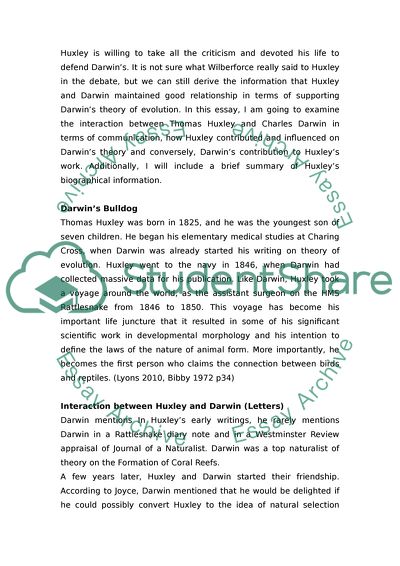Cite this document
(The Interaction between Thomas Huxley and Charles Darwin in Terms of C Essay, n.d.)
The Interaction between Thomas Huxley and Charles Darwin in Terms of C Essay. https://studentshare.org/biographies/1801904-collaboration-select-one-person-who-exerted-an-influence-on-darwin-investigate-their-interaction-and-describe-the-nature-of-their-collaboration
The Interaction between Thomas Huxley and Charles Darwin in Terms of C Essay. https://studentshare.org/biographies/1801904-collaboration-select-one-person-who-exerted-an-influence-on-darwin-investigate-their-interaction-and-describe-the-nature-of-their-collaboration
(The Interaction Between Thomas Huxley and Charles Darwin in Terms of C Essay)
The Interaction Between Thomas Huxley and Charles Darwin in Terms of C Essay. https://studentshare.org/biographies/1801904-collaboration-select-one-person-who-exerted-an-influence-on-darwin-investigate-their-interaction-and-describe-the-nature-of-their-collaboration.
The Interaction Between Thomas Huxley and Charles Darwin in Terms of C Essay. https://studentshare.org/biographies/1801904-collaboration-select-one-person-who-exerted-an-influence-on-darwin-investigate-their-interaction-and-describe-the-nature-of-their-collaboration.
“The Interaction Between Thomas Huxley and Charles Darwin in Terms of C Essay”. https://studentshare.org/biographies/1801904-collaboration-select-one-person-who-exerted-an-influence-on-darwin-investigate-their-interaction-and-describe-the-nature-of-their-collaboration.


